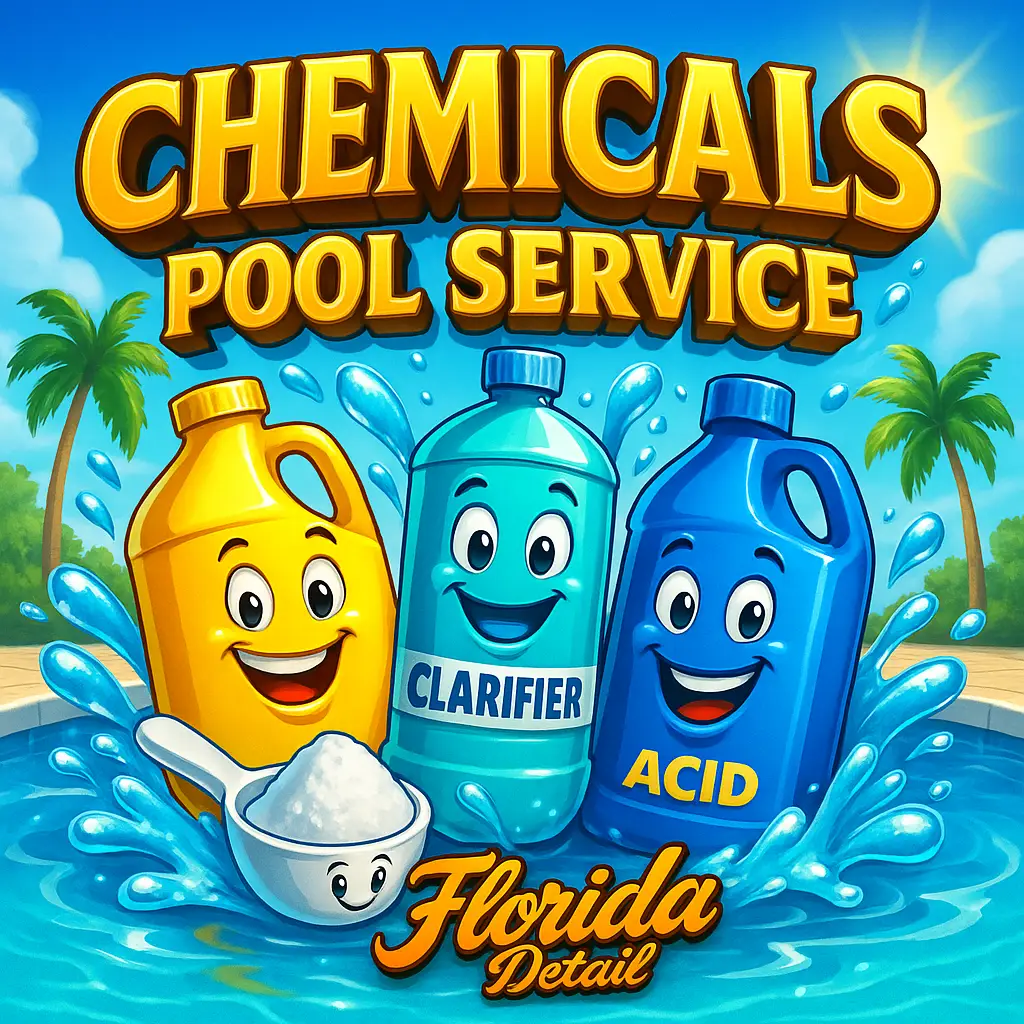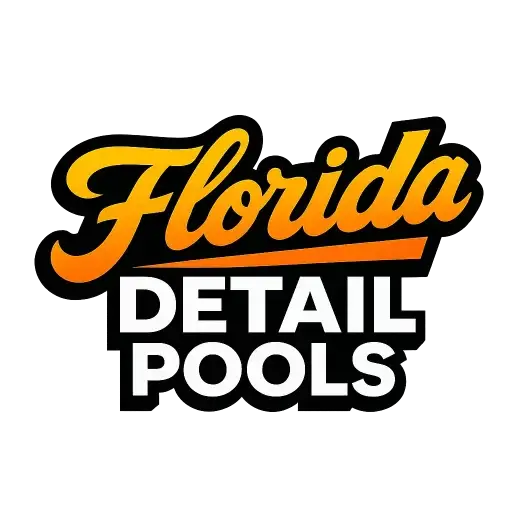5 Ways to Reduce Green Water Problems in Port Charlotte
Green pool water represents one of the most frustrating challenges facing Port Charlotte pool owners, transforming crystal-clear swimming areas into unsightly, potentially dangerous environments within days or even hours. The combination of Southwest Florida’s intense heat, abundant rainfall, and year-round growing conditions creates ideal circumstances for algae proliferation that can overwhelm even well-maintained pool systems.
Understanding the root causes of green water and implementing proven prevention strategies enables Charlotte County pool owners to maintain consistently clear, safe swimming conditions while avoiding the expense and inconvenience of major algae treatment procedures. The key lies in addressing the underlying conditions that promote algae growth rather than simply treating visible symptoms after problems develop.
Understanding Green Water Causes in Port Charlotte
Environmental Factors Contributing to Algae Growth
Temperature Optimization for Algae Port Charlotte’s warm climate creates year-round conditions that promote algae reproduction:
- Water temperatures consistently above 75°F accelerate algae growth rates
- Lack of seasonal cooling periods prevents natural algae die-offs
- High humidity maintains moisture levels that support airborne algae spores
- Extended daylight hours provide energy for photosynthetic algae growth
Nutrient Availability Florida’s environment introduces algae nutrients from multiple sources:
- Frequent rainfall brings phosphates and nitrates from atmospheric sources
- Landscape fertilizers wash into pools during storms
- Organic debris provides food sources for algae establishment
- Pool chemicals can become imbalanced, creating favorable growth conditions
Circulation and Filtration Challenges Poor water movement creates ideal algae growth environments:
- Dead zones in circulation systems allow algae colonies to establish
- Inadequate filtration fails to remove algae spores before growth begins
- Clogged equipment reduces circulation effectiveness
- Improper chemical distribution enables localized algae growth
Method 1: Optimize Water Chemistry Balance
Precise Chemical Management
Chlorine Level Optimization Maintaining proper chlorine levels provides the foundation for algae prevention:
- Free chlorine should consistently remain between 1-3 ppm for algae prevention
- Combined chlorine levels above 0.5 ppm indicate inadequate sanitization
- Shock treatments should raise free chlorine to 10+ ppm when treating existing algae
- Stabilizer levels between 30-50 ppm protect chlorine from UV degradation
pH Control Critical for Sanitizer Effectiveness Proper pH ensures maximum chlorine effectiveness against algae:
- Optimal pH range of 7.2-7.6 maximizes sanitizer killing power
- High pH above 7.8 reduces chlorine effectiveness by up to 80%
- Low pH below 7.0 causes rapid chlorine consumption and equipment damage
- Regular testing prevents pH drift that creates algae growth opportunities
Alkalinity Buffer Management Total alkalinity provides chemical stability that prevents algae-promoting conditions:
- Maintain alkalinity between 80-120 ppm for pH stability
- Low alkalinity causes pH fluctuations that reduce sanitizer effectiveness
- High alkalinity makes pH adjustment difficult and expensive
- Professional water chemistry management ensures optimal balance

Advanced Chemical Testing
Professional-Grade Testing Equipment Accurate chemical measurement requires proper tools:
- Digital test kits provide precision beyond basic test strips
- Professional testing reveals trace elements that affect water balance
- Regular calibration ensures consistent accuracy
- Multiple testing methods verify results and prevent errors
Testing Frequency Requirements Port Charlotte conditions demand frequent monitoring:
- Daily testing during peak algae season (summer months)
- Immediate testing after storms or heavy pool usage
- Weekly comprehensive testing including all chemical parameters
- Professional testing monthly to verify home testing accuracy
Method 2: Enhance Circulation and Filtration
Circulation System Optimization
Turnover Rate Requirements Adequate water movement prevents algae establishment:
- Complete pool turnover should occur every 6-8 hours minimum
- High-debris periods may require increased circulation rates
- Variable-speed pumps provide flexibility for different conditions
- Professional assessment determines optimal flow rates for your specific pool
Dead Zone Elimination Identify and address areas with poor circulation:
- Steps, corners, and behind equipment often have stagnant water
- Additional return jets may be needed for complete circulation
- Brush and vacuum dead zones more frequently
- Consider circulation boosters for problem areas
Equipment Performance Monitoring Ensure filtration systems operate at peak efficiency:
- Monitor pressure gauges for signs of reduced flow
- Clean or backwash filters based on performance rather than schedules
- Inspect pump baskets and skimmers daily during peak debris periods
- Professional equipment maintenance prevents performance degradation
Filter System Enhancement
Filter Type Considerations Different filtration methods provide varying algae control:
- Cartridge filters trap algae particles effectively with proper maintenance
- Sand filters provide biological filtration that breaks down organic matter
- DE filters offer finest particle removal for maximum algae spore capture
- Professional evaluation determines optimal filtration for your conditions
Maintenance Schedule Optimization Clean filters remove algae spores before growth occurs:
- Cartridge filters require cleaning every 2-4 weeks during peak season
- Sand filters need backwashing when pressure increases 8-10 psi
- DE filters should be broken down and cleaned every 6 months minimum
- Emergency cleaning may be needed after heavy storms or algae treatments
Method 3: Strategic Chemical Treatment and Prevention
Preventive Algaecide Programs
Algaecide Selection and Application Different algae types require specific treatment approaches:
- Quaternary ammonium compounds provide broad-spectrum prevention
- Copper-based algaecides offer stronger treatment for persistent problems
- Polyquat algaecides work well for weekly maintenance programs
- Professional assessment determines optimal products for your situation
Application Timing and Frequency Strategic treatment prevents algae establishment:
- Weekly preventive doses during high-risk periods
- Immediate treatment after storms or heavy organic debris introduction
- Increased frequency during peak summer heat and humidity
- Coordination with shock treatments for maximum effectiveness
Shock Treatment Protocols
Shock Selection for Algae Control Different shock products provide varying benefits:
- Calcium hypochlorite offers powerful oxidation without cyanuric acid buildup
- Sodium hypochlorite provides liquid convenience with precise dosing
- Potassium monopersulfate works well for regular oxidation without chlorine
- Professional guidance ensures appropriate product selection
Treatment Procedures for Maximum Effectiveness Proper shock application maximizes algae killing power:
- Evening application prevents immediate UV degradation
- Circulation during treatment ensures even chemical distribution
- Multiple treatments may be needed for established algae colonies
- Professional algae treatment services handle severe infestations
Method 4: Environmental Management and Debris Control
Proactive Debris Management
Daily Maintenance Routines Consistent debris removal prevents algae nutrition sources:
- Skim surface debris before it decomposes and releases nutrients
- Empty skimmer baskets to maintain optimal circulation
- Brush walls and steps to prevent algae attachment
- Remove large debris immediately to prevent decomposition
Landscaping Considerations Strategic plant selection reduces algae-promoting debris:
- Choose plants that drop minimal organic matter into pools
- Position fertilizer applications away from pool areas
- Trim overhanging branches that drop leaves and debris
- Consider pool-friendly landscaping that requires minimal fertilization
Storm Preparation and Recovery
Pre-Storm Procedures Prepare pools to minimize algae growth opportunities during weather events:
- Super-chlorinate before storms to provide extended protection
- Remove loose debris that storms could wash into pools
- Ensure chemical feeders are full and functioning properly
- Professional storm preparation services optimize protection
Post-Storm Recovery Rapid response prevents algae establishment after storms:
- Remove debris immediately before decomposition begins
- Test and adjust water chemistry disrupted by rainfall dilution
- Shock treat if chlorine levels dropped significantly
- Professional assessment may be needed for severe contamination
Method 5: Professional Maintenance Integration
Regular Professional Service Benefits
Expertise and Experience Professional technicians provide knowledge that prevents problems:
- Recognition of early algae warning signs before visible growth
- Understanding of chemical interactions that affect algae growth
- Experience with Port Charlotte’s specific environmental challenges
- Access to commercial-grade chemicals and equipment
Consistent Care and Monitoring Regular professional attention prevents small problems from escalating:
- Weekly chemical testing and adjustment with professional equipment
- Regular equipment inspection and maintenance
- Proactive treatment during high-risk periods
- Documentation of trends that indicate developing problems
Specialized Treatment Capabilities
Advanced Treatment Options Professional services offer solutions beyond homeowner capabilities:
- Commercial-grade algaecides not available to consumers
- Specialized equipment for severe algae removal
- Flocculation treatments that clear green water rapidly
- Coordination with equipment repairs needed for long-term prevention
Emergency Response Services Professional support when prevention fails:
- Rapid response to severe algae outbreaks
- 24/7 availability during peak algae seasons
- Coordination with other pool professionals for comprehensive solutions
- Insurance documentation for algae-related damage claims
Cost Analysis of Prevention vs. Treatment
Prevention Investment Benefits
Chemical Cost Savings Preventing algae costs significantly less than treating established problems:
- Regular maintenance chemicals: $50-100 monthly
- Algae treatment chemicals: $200-500 per incident
- Professional prevention services: $100-150 monthly
- Emergency algae treatment: $300-800 per incident
Equipment Protection Value Algae prevention protects expensive equipment:
- Filters last longer without algae clogging
- Pumps operate more efficiently with clean water
- Surfaces avoid staining that requires expensive restoration
- Equipment warranties remain valid with proper maintenance
Long-Term Value Calculation
Property Value Protection Clean, algae-free pools enhance property value:
- Buyers prefer pools with documented professional maintenance
- Green water issues can reduce property values significantly
- Professional maintenance records demonstrate quality care
- Energy-efficient operation reduces ownership costs for buyers
Regional Service Resources
Professional Service Providers
For comprehensive algae prevention and treatment services specifically designed for Port Charlotte conditions, Florida Detail provides expert assessment and customized solutions that address local environmental challenges.
Additional specialized expertise is available through NorthPortPoolCompany.com and PoolCleaningInPortCharlotte.com, which understand the unique algae challenges facing Southwest Florida pools.
Technology and Product Resources
For detailed information about algae prevention products, water chemistry management, and advanced treatment technologies, UnlimitedManiac.com provides comprehensive resources covering the latest innovations in algae control and water quality management.
Advanced Prevention Technologies
Automated Chemical Management
Smart Chemical Controllers Modern technology enables precise chemical control:
- Automated chlorine and pH adjustment systems
- Real-time monitoring with smartphone alerts
- Integration with weather forecasting for proactive adjustments
- Historical data tracking for trend analysis and optimization
UV and Ozone Systems Supplemental sanitization reduces chemical dependence:
- UV sterilizers destroy algae spores without affecting water chemistry
- Ozone generators provide powerful oxidation for algae prevention
- Combined systems reduce chlorine requirements while improving control
- Professional installation ensures optimal performance and safety
Seasonal Strategies for Port Charlotte
Summer Intensive Management
Peak Season Requirements Hot weather demands enhanced prevention measures:
- Increased chemical testing and adjustment frequency
- Extended circulation times during peak heat periods
- More frequent professional service visits
- Enhanced algaecide programs during high-risk months
Storm Season Adaptations
Hurricane Preparation Severe weather requires specific algae prevention strategies:
- Pre-storm super-chlorination procedures
- Post-storm rapid response protocols
- Emergency equipment protection and restoration
- Professional coordination for severe damage situations
Maximize Your Algae Prevention Success
Effective green water prevention in Port Charlotte requires combining multiple strategies that address the environmental factors promoting algae growth. The most successful approaches integrate proper chemical management, enhanced circulation, strategic treatment, environmental control, and professional expertise to create comprehensive protection against algae problems.
Professional guidance ensures optimal implementation of prevention strategies while providing rapid response when problems develop despite preventive measures. Pool cleaning in Charlotte County experts understand the specific challenges facing Port Charlotte pools and can recommend comprehensive solutions that provide reliable, long-term algae control.
Transform Your Pool Water Quality Today
Don’t let green water problems compromise your swimming enjoyment or create expensive treatment requirements. Implement comprehensive prevention strategies that address the root causes of algae growth while providing reliable protection against Port Charlotte’s challenging environmental conditions.
Explore professional algae prevention services and customized solutions at https://FloridaDetail.com to develop a comprehensive approach that keeps your pool crystal clear throughout Southwest Florida’s demanding algae season. Take control of your water quality today and enjoy worry-free swimming with proven prevention strategies designed specifically for Port Charlotte conditions.
